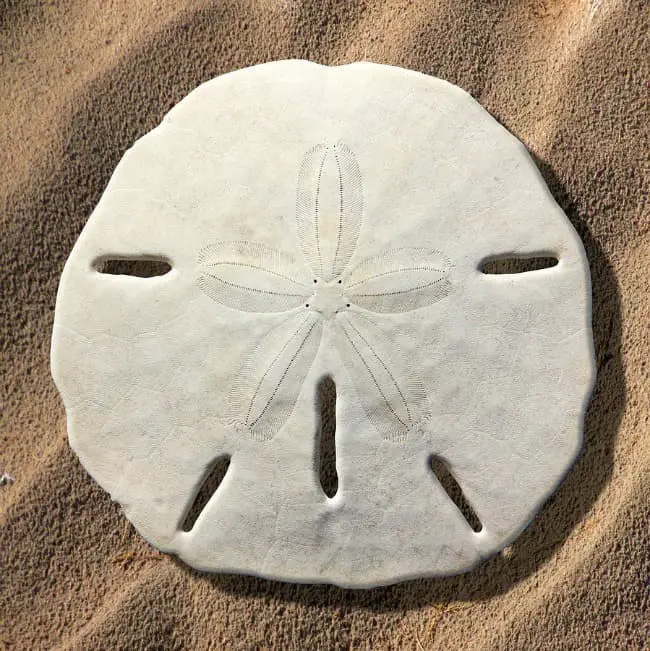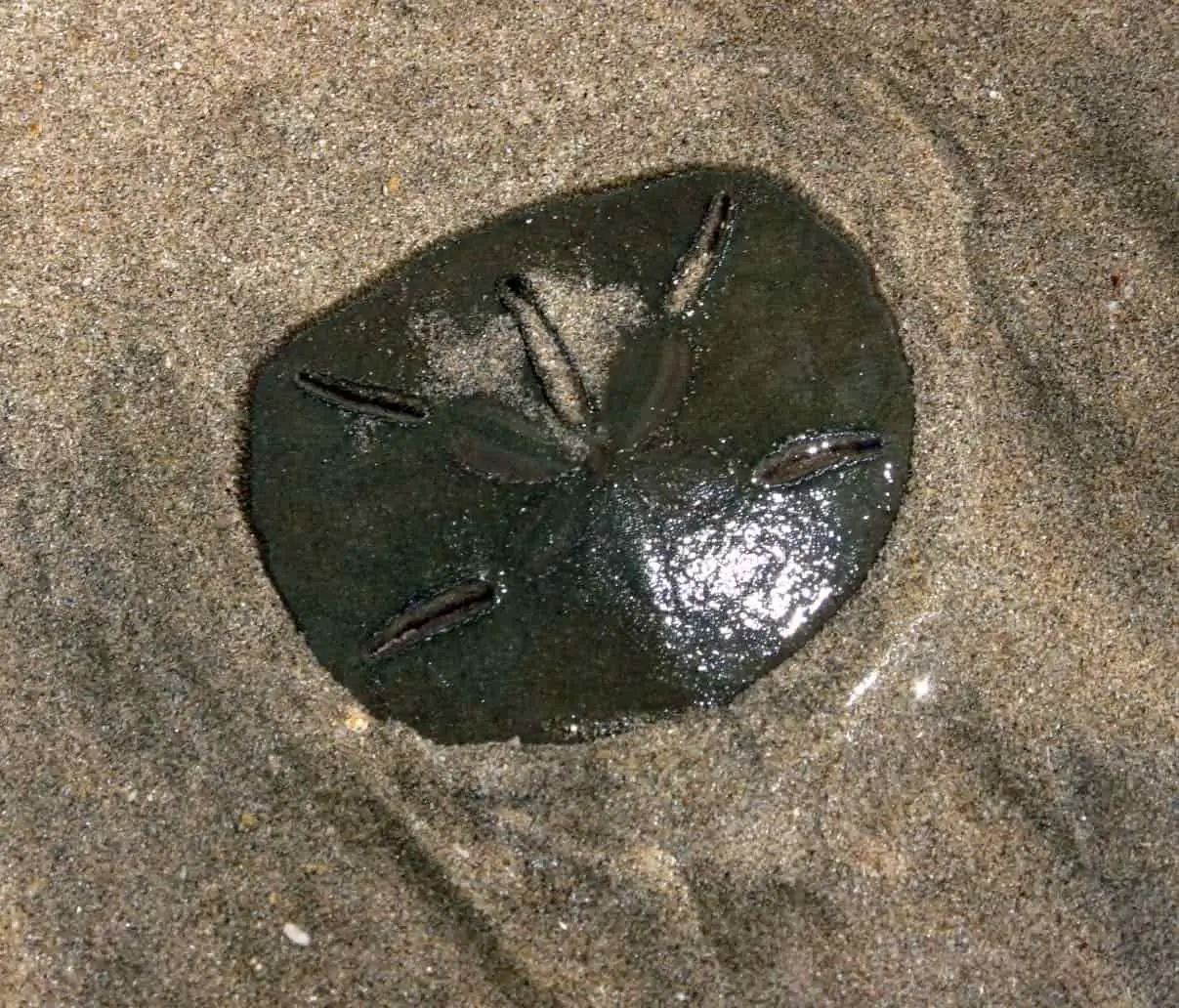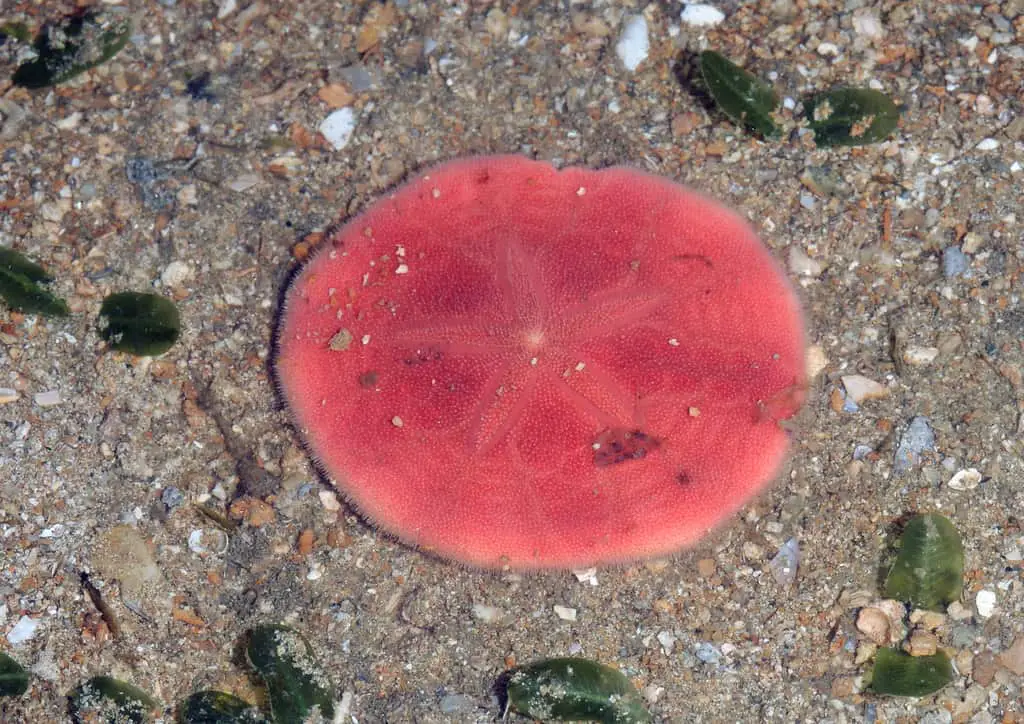Are Sand Dollars Alive?
Sand dollars are one of the most interesting living marine creatures. I first found one myself two years ago on the coast of Panama and I thought they were just little shells with a flower on them. Apparently, they were much more than that. Just like you, I wondered whether sand dollars were dead or alive, in this post we’ll talk all about that. However, let’s start with a quick answer:
Sand dollars are living creatures and when alive, they have tiny spines all around their body and you can see them moving. Furthermore, they have a purple color and they’ll produce a yellow substance if you put them on your hand. Dead sand dollars lose their spines and are generally white and rock-hard.
However, that certainly doesn’t tell the whole story. Below I’ll explain the difference between a dead and alive sand dollar, what happens to sand dollars when they die, and if you can keep the sand dollar you found. Furthermore, I’ll explain how to preserve a sand dollar and what to do if you find a living one. Read on!
The difference between dead and alive sand dollars
There are a few ways to tell if a sand dollar is alive or dead. Below you’ll find 4 ways on how to identify it.
Spines and movement
One of the ways to tell if a sand dollar is alive or dead is to observe spines and their movement. Sand dollars have tiny spines all over their body that help them move around the ocean floor and bury themselves in the sand. This is a very characteristic feature for members of the Phylum Echinodermata to which sand dollars belong.
They also use their hair-like cilia to breathe and move food to the mouth opening which is located in the center of the flower-like shape pattern on the bottom of their body. Simply place the sand dollar on your hand palm and observe the spines. If you see or feel them – the sand dollar is still alive. These marine creatures lose them after they die.
It is also interesting to note, that sea urchins belonging to the same phylum Echinodermata family, lose their spikes after they die as well.
Color
The color of living sand dollars ranges from dark brown to purplish-red so they can stay camouflaged on the seafloor. The color may differ depending on the species since there are more than 200 of them! There were even some rare species spotted on the coast of Australia and Indonesia with a bright pink color (Peronella Lesueuri). After sand dollars die, their skeleton is bleached by the sun and it eventually turns into silvery-white.



Yellow substance
Another way to determine if the sand dollar is dead or alive is by observing a yellow substance. Living sand dollars produce a harmless substance called echinochrome. Hold the sand dollar gently in the palm of your hand and leave it for a minute. If it leaves a yellowish stain, it’s the sign that the animal is alive and you should return it to the water.
Hardness
You can also tell whether a sand dollar is alive or dead by its hardness. If you find a sand dollar skeleton that is rocky-hard and unbreakable, it’s probably a fossil. This sand dollar is definitely dead and you are pretty lucky to find one. Fossils are remains (or traces) of ancient animals. They can preserve entire organisms or small parts by natural processes. There are some sand dollars fossils found approximately 150-50 million years ago!

If by any chance you collected a living sand dollar, make sure you return it to the ocean as quickly as possible. Sand dollars can’t survive without the water for longer than a few minutes.
What happens to sand dollars when they die?
As you already know, after sand dollars die, their spines fall off and just their skeletons (called tests) remain. Then the sun bleaches the tests, eventually turning them white.
But as every living organism – they serve their purpose in our ecosystem. Sand dollars eat detritus, planktons, algae, crustacean larvae, and debris from the seafloor. They also are a source of food for predators that are living on the bottom of the ocean including crabs, sea stars, fish, octopuses. What it means is that even after their death, they provide a very important source for our oceans – calcium carbonate. Eventually, this source combined with seawater helps other animals and plants to build their shells. It’s important to know that every organism is an important part of our ecosystem, and it’s always better to leave them where they were found.
Why do sand dollars die?
Sand dollars’ death is mostly caused by either their predators or ocean tides and currents.
One of the biggest predators of sand dollars are seagulls. They carry them in their mouth and dash their body on hard objects. Marine predators of sand dollars are mostly fish species like cod, flounder, sheepshead, and haddock, crabs, sea stars, and octopuses.
Currents however are a much bigger challenge for sand dollars. Even though they have large holes in their tests that help them to stay grounded, the strong tides and currents often bring them close to the beach, leaving them on sunny shores. When they reach the beach, they can’t live without the water for long and they are being dried out by the sun.
How can you tell how old the sand dollar is?
If you find a sand dollar washed up on the beach shore and wondering how long it is, there’s an easy way to tell. Just like counting the rings on the tree stump, you can count rings’ growth on the sand dollar that are placed on the bottom side of its skeleton.
How old sand dollars get?
Most of the sand dollars live for 8-10 years which is quite remarkable for a marine creature without strong defending availabilities. They are able to survive long thanks to their dark shade color that helps them to camouflage on the sandy bottom of the ocean. They’re known for burrowing in the sand completely as it’s much easier than actually defending themselves or escaping.
Can I keep a sand dollar?
If you found a sand dollar on the beach and are wondering if you can keep it, below I’ll explain if it’s legal to keep them and how to preserve their shells after taking them home.
Is it legal to keep a sand dollar?
Before you decide to keep a sand dollar, be 100 percent sure that this is no longer a living animal. Be aware that taking sand dollars, sea stars, or any other living creatures and “drying” them, is not only a very inappropriate thing to do but also it’s subject to regulation by local and state authorities as it’s considered as harvesting a live organism. With that being said, taking home a living sand dollar is illegal and can be fined even $500 USD (depending on the region).
Most of the time, taking dead sand dollars is legal but it’s good to check if there are any signs on the beach or ask employees who work there. Sometimes there are restrictions about the number of sand dollars you can collect in one day.
How to preserve a dead sand dollar at home
If you’ve decided to keep a dead sand dollar that you found on the beach, cleaning and good preservation will help you to get rid of the bad smell and make a shell harder so it won’t break.
Cleaning the sand dollar shell

- Soak the sand dollar in the freshwater
First, prepare a bucket with fresh water and soak your sand dollars for a day or two, changing the water every few hours. This will help to remove any remains of spines, algies and get rid of a fishy smell.
- Brush the shell.
To make sure you remove remains from the crevices of the shell, you might want to use a toothbrush and toothpicks. Brush it during the soaking process, making sure you do it gently as these shells are very delicate and can crack very easily.
- Soak your shells in bleach.
Next, prepare a mixture of half fresh water and half bleach. Soak your sand dollar in this solution for about 10 minutes or less. Don’t leave it for too long because it may cause the shell to disintegrate.
- Rinse the shells.
Remove your shells from the bleach mixture and rinse them under fresh water. Make sure you’re wearing rubber gloves.
- Dry on the sun.
Once your shell is completely clean, lay it on the towel and let it dry in the sun.
Preserving the sand dollar shell
This step is not necessary but it’s helpful if you want to harden your shell and prevent it from breaking. To do that, follow the steps below.
- Prepare a mixture.
Simply, mix together a school glue and water in an equal proportion.
- Paint your shells.
- Put your shell on wax paper and by using a brush or sponge, cover the shell with the mixture. First, paint the top part of the shell and after it dries out, flip it over and paint the underside. Let it dry completely and your shell is ready. You can keep it like this or use it in your craft projects.
What if I found a living sand dollar?
After examining the sand dollars spines, color, yellow substance you came to the conclusion that the sand dollar you found is alive – make sure you return it to the sea as soon as possible. Sand dollars can’t survive out of the water for longer than a few minutes. As I mentioned above, this is illegal to keep a living sand dollar but also inhumane to collect living organisms from their natural habitat.
If a living sand dollar you found is on the beach, gently place it on your hand palm and put it in the water. If you see sand dollars in the water or buried on the seafloor, better don’t pick them up as they’re probably alive and trying to hide in the sand. Remember that we should not touch anything in the ocean (and any other wild animals) because it can be very harmful to them. We can transfer our human bacteria, leaving animals susceptible to disease.
You may also like:

Welcome to Bubbly Diver!
I’m glad to see you here. This blog is created for all marine creature lovers by a bubbly diver - me, Dori :)


